Sourav Pan
Transcript
Hey everyone! Today, we’re diving into the fascinating world of algae. These remarkable organisms are quite different from the plants you might be familiar with.
Algae are simple, photosynthetic organisms that are primarily aquatic, meaning they live in water environments. They are key components of aquatic ecosystems around the world.
Unlike your typical plants with roots, stems, and leaves, algae have a much simpler body called a thallus. Think of it as a foundational structure that’s perfectly adapted for aquatic life.
Let’s look at some examples of different algae and their thallus organization. This chart shows various types of algae, from simple single-celled forms to more complex structures.
Algae are classified under Thallophyta, which is a group of plants that lack true roots, stems, or leaves. This group includes algae, fungi, and lichens, all sharing the key feature of having a simple thallus body structure.
Here we can see actual examples of different algae types. Notice the variety in their forms and colors – from red algae to brown algae to green algae. Each has adapted their thallus structure for their specific environment.
The thallus structure is perfectly adapted for aquatic environments. It allows for efficient nutrient absorption directly from water, represents a simple yet effective design, and enables algae to take on diverse forms and sizes.
So remember, algae’s thallus structure is what makes them unique and perfectly suited for aquatic life. This simple yet effective body plan has allowed them to thrive in water environments for millions of years.
Most algae are remarkable organisms that can produce their own food, but they also have some surprising flexibility in how they obtain nutrients. Understanding this helps us see why algae are so successful in diverse environments.
Most algae are autotrophs, which means they are self-feeding organisms. Autotrophs produce their own food through the process of photosynthesis, just like plants do.
In photosynthesis, algae use carbon dioxide from the water, combine it with water molecules, and harness energy from sunlight to create their own food. As a bonus, they release oxygen as a byproduct, which is essential for life on Earth.
However, algae are not limited to just photosynthesis. Some algae can also be heterotrophs, which means they obtain nutrients from external sources rather than making their own food.
This image shows the key difference between autotrophs and heterotrophs. Autotrophs like plants and most algae make their own food using sunlight, while heterotrophs like animals and fungi must consume other organisms to get their energy and nutrients.
What makes algae truly remarkable is their flexibility. Many algae can switch between being autotrophic and heterotrophic depending on environmental conditions.
When sunlight is abundant, algae can use their autotrophic mode, performing photosynthesis to make their own food. But when light is scarce or unavailable, they can switch to heterotrophic mode, consuming organic matter from their environment.
This incredible flexibility gives algae several major advantages. They can survive in diverse environments, quickly adapt to changing light conditions, and thrive in places where other organisms simply cannot survive. This adaptability is one reason why algae are found in virtually every aquatic environment on Earth.
This mix of autotrophic and heterotrophic behaviors makes algae incredibly adaptable organisms, allowing them to colonize environments from bright surface waters to dark ocean depths, and from nutrient-rich ponds to nutrient-poor environments.
Algae display an incredible diversity in their body organization, known as thallus organization. This diversity spans from the simplest single-celled forms to remarkably complex multicellular structures.
Thallus organization refers to the body structure of algae. Unlike higher plants, algae lack true roots, stems, or leaves. Instead, their entire body is called a thallus, which can range from incredibly simple single cells to remarkably complex arrangements.
This chart shows the main types of thallus organization found in algae. We can see the progression from simple unicellular forms like Chlamydomonas to complex multicellular structures like Chara.
Here we can see examples of this diversity. On the left are simpler algal forms with basic cellular arrangements, while on the right we see more complex multicellular algae with specialized structures and organization.
This detailed view of Spirogyra shows how even relatively simple filamentous algae have sophisticated cellular organization. Each cell contains specialized structures like chloroplasts, nucleus, and pyrenoids, all working together efficiently.
At the most complex end of the spectrum, we find algae like Ulva with parenchymatous organization. These algae have developed tissue-like structures that resemble the leaves of higher plants, showing remarkable evolutionary advancement.
This incredible diversity in thallus organization reflects millions of years of evolutionary adaptation. Simple forms are highly efficient in nutrient-rich environments, while complex forms allow for better competition and specialization. Each type plays a crucial role in maintaining healthy aquatic ecosystems around the world.
From the tiniest single-celled algae to complex multicellular structures, this remarkable diversity demonstrates the incredible adaptability and evolutionary success of algae in aquatic environments.
Unicellular algae represent the simplest and most fundamental form of algae organization. These remarkable organisms consist of just a single cell, yet they perform all the essential functions of life.
A unicellular algae is composed of just one cell that contains all the necessary organelles for survival, including a nucleus, chloroplasts for photosynthesis, and other essential structures.
Unicellular algae can be divided into two main categories based on their ability to move. Motile forms can actively swim or move through water, while non-motile forms remain stationary in their environment.
Here we see Chlamydomonas, a perfect example of a motile unicellular algae. Notice the flagella extending from the cell that allow it to swim through water, and the various organelles packed into this single cell.
These organisms are incredibly tiny. Micromonas pusilla, one of the smallest known algae, measures only about 1 micrometer in diameter. To put this in perspective, a human hair is about 100 times wider than this entire organism.
Despite their tiny size, unicellular algae play enormous roles in aquatic ecosystems. They serve as primary producers, forming the foundation of food webs, producing oxygen through photosynthesis, and can be found in virtually every aquatic environment on Earth.
The key takeaway is that unicellular algae prove that size doesn’t determine importance. These single-celled organisms demonstrate how even the simplest forms of life can have massive impacts on our planet’s ecosystems.
Some unicellular algae have developed remarkable abilities to move through water. Unlike stationary algae, these motile forms can actively swim to find better conditions for survival.
The first type of motile algae uses rhizopodial movement. Chrysamoeba is a perfect example of this. These cells extend parts of their cytoplasm called pseudopodia, which means false feet.
Watch how pseudopodia extend outward from the cell body. The cell flows its cytoplasm into these projections, then pulls the rest of the cell forward. This creates a flowing, amoeba-like movement through the water.
Now let’s examine the second type of motile algae, which uses a completely different approach to movement.
Flagellated algae like Chlamydomonas use a different strategy. They have long, whip-like structures called flagella that beat rapidly to propel the cell through water.
The flagella beat in a coordinated whipping motion, much like tiny oars. This creates a current that pushes the cell forward through the water. Most flagellated algae have two flagella working together.
Both rhizopodial and flagellated movement serve important purposes. These algae can move toward light sources for better photosynthesis, swim to areas rich in nutrients, and escape from harmful conditions.
This ability to move gives motile unicellular algae a significant advantage over their stationary relatives, allowing them to actively seek out the best conditions for growth and survival.
Non-motile unicellular algae represent a fascinating group of organisms that have evolved to thrive without the ability to actively move through their aquatic environments.
These algae depend entirely on water currents and environmental factors for their movement and dispersal throughout aquatic ecosystems.
Coccoid algae are characterized by their spherical or oval shapes. The most well-known example is Chlorella, a single-celled green algae that maintains a perfectly spherical form and remains completely stationary in the water.
Spiral algae exhibit a unique helical or spiral arrangement. Spirulina is the most famous example, a cyanobacteria that forms distinctive spiral filaments and is valued for its high protein content and nutritional benefits.
Since non-motile algae cannot move on their own, they rely entirely on external forces for dispersal. Water currents, wave action, and tidal movements carry these organisms throughout their aquatic environments, allowing them to colonize new areas and maintain genetic diversity.
To summarize, non-motile unicellular algae represent an important group that includes both coccoid forms like Chlorella and spiral forms like Spirulina. Despite their inability to move actively, these organisms successfully thrive by utilizing environmental forces for dispersal and reproduction.
Colonial algae represent the next step in complexity from unicellular forms. Instead of living alone, multiple individual cells come together to form organized communities.
These cells aggregate within a common mucilaginous matrix – a jelly-like substance that acts like a protective envelope around the entire colony.
Within the colony, cells are connected by cytoplasmic threads. These microscopic bridges allow the cells to communicate and coordinate their activities as a unified organism.
This connection enables remarkable coordination. When one cell detects a change in the environment, it can signal other cells through these cytoplasmic bridges, allowing the entire colony to respond together.
A perfect example of colonial algae is Volvox. Let’s look at a real microscopic image of these fascinating organisms.
Here we can see two Volvox colonies. Each spherical colony contains hundreds of individual cells embedded in a clear mucilaginous matrix. Notice the smaller daughter colonies developing inside – this shows how colonial algae can reproduce and create new generations.
Colonial algae can be classified into two main types. Motile colonial algae, like Volvox, have flagella that allow the entire colony to swim through the water. Non-motile colonial algae, like Hydrodictyon, remain stationary and rely on water currents for movement.
Colonial algae demonstrate how simple cells can work together to create more complex organisms. This cooperation through mucilaginous matrices and cytoplasmic connections represents an important evolutionary step toward multicellular life.
Among the most fascinating examples of colonial algae are the motile forms, where entire colonies can swim through water in coordinated movements. The classic example of this remarkable organization is Volvox.
Volvox represents one of nature’s most elegant solutions to colonial life. These algae form perfectly spherical colonies that can contain hundreds to thousands of individual cells, all working together as a single swimming organism.
What makes Volvox truly special is the arrangement of its cells. Each individual cell has two flagella – tiny whip-like structures that beat in synchronized patterns. These flagellated cells are positioned on the outer surface of the sphere.
The coordinated beating of these flagella creates a remarkable swimming motion. The entire colony rotates and moves through the water like a tiny, green, swimming ball. This coordinated movement allows Volvox to actively seek light for photosynthesis and nutrients.
Inside the Volvox colony, you can often observe daughter colonies developing. These smaller spheres grow within the parent colony and will eventually be released to form new independent colonies, continuing the cycle of colonial life.
Volvox perfectly demonstrates how individual cells can work together to create something greater than the sum of their parts. This motile colonial organization represents an important evolutionary step toward more complex multicellular life forms.
Non-motile colonial algae represent a fascinating form of organization where individual cells come together to form colonies, but unlike their motile cousins, these cells cannot move independently through the water.
Non-motile colonial algae have several key characteristics. Individual cells cannot move on their own, but they form organized colonies where the structure remains relatively fixed, and all cells work together for survival.
Hydrodictyon, commonly known as the water net, is a perfect example of non-motile colonial algae. It forms intricate net-like structures in freshwater environments, with cells arranged in beautiful geometric patterns.
Looking closely at the structure, we can see that Hydrodictyon cells are arranged in hexagonal and pentagonal patterns. These connected tube-like cells form an intricate network that resembles a fishing net.
Hydrodictyon thrives in freshwater environments such as ponds, lakes, and slow-moving streams. These algae often form dense floating mats on the water surface, creating distinctive green patches.
The net-like structure of Hydrodictyon acts as an efficient filtering system. As water flows through the openings in the network, nutrients get trapped and absorbed by the cells, making this organization highly effective for feeding.
To summarize, non-motile colonial algae like Hydrodictyon demonstrate how cells can work together without individual movement. Their net structure maximizes surface area for nutrient absorption, creating an efficient filtering system that thrives in freshwater environments.
This organization represents a perfect balance between simplicity and efficiency, showing how colonial cooperation can create complex structures from simple cells.
Filamentous algae represent a fascinating step up in complexity from single-celled forms. These multicellular organisms create thread-like structures by connecting individual cells end-to-end, forming chains that can extend for considerable lengths.
Let’s start with individual algae cells. Each cell is a complete living unit with its own cell wall, membrane, and internal structures like chloroplasts for photosynthesis.
In filamentous algae, these individual cells attach to each other end-to-end, creating a continuous chain or thread. This connection allows them to share resources and work together as a multicellular organism.
Filamentous algae come in two main structural types: unbranched filaments that form simple straight or curved chains, and branched filaments that develop side branches, creating more complex tree-like structures.
Let’s look at some real examples of filamentous algae. Here we can see cyanobacteria forming long, segmented filaments. Notice how the individual cells are clearly visible as segments within each thread-like structure.
This diagram shows the detailed structure of Spirogyra, a common green algae. You can see how individual cells connect end-to-end, and each cell contains chloroplasts, a nucleus, and other cellular components.
The filamentous structure provides several key advantages. The thread-like form increases surface area for better nutrient absorption, improves light capture in water, provides structural stability, and allows efficient sharing of resources between connected cells.
This microscopic view shows the intricate network that filamentous algae can create. These thread-like structures interweave to form complex mats and colonies, demonstrating how simple cell-to-cell connections can create sophisticated biological architectures.
Unbranched filamentous algae represent one of the most common and recognizable forms of algal organization. These organisms form simple, thread-like structures where cells are connected end-to-end in a single chain without any branching.
Spirogyra is one of the most beautiful and easily recognizable unbranched filamentous algae. It gets its name from the distinctive spiral-shaped chloroplasts that wind through each cell like green ribbons.
The Spirogyra cell structure is remarkably organized. Each cell contains one or more spiral-shaped chloroplasts that contain pyrenoids for starch storage. The cells are surrounded by a protective mucilage coating and typically measure between 10 to 100 micrometers in diameter.
Under the microscope, Spirogyra reveals its most distinctive feature – the spiral chloroplasts that give it its name. These green ribbons wind through each cell, creating a beautiful helical pattern that makes Spirogyra one of the most visually striking algae.
Ulothrix represents a simpler form of unbranched filamentous algae. Unlike Spirogyra’s spiral chloroplasts, Ulothrix has a more straightforward cellular organization with band-like or ring-shaped chloroplasts.
Ulothrix is commonly found in freshwater streams where it attaches to rocks and other substrates. It forms simple, unbranched filaments that often create green mats in flowing water. The cells have band-like chloroplasts that wrap around the cell interior.
Both Spirogyra and Ulothrix are important components of freshwater ecosystems. They can be found in ponds, streams, and lakes where they form green mats and provide oxygen and food for aquatic organisms.
Both Spirogyra and Ulothrix demonstrate the beauty and efficiency of unbranched filamentous organization. While Spirogyra showcases complex spiral chloroplasts in quieter waters, Ulothrix thrives with simpler band-like chloroplasts in flowing streams. Together, they represent the diversity possible within this fundamental algal body plan.
Branched filamentous algae represent a more complex form of organization compared to the simple unbranched filaments we’ve seen. The most well-known example is Cladophora, which creates intricate branching patterns.
To understand branched filamentous algae, let’s first compare them to unbranched forms. While unbranched filaments grow in a simple linear pattern, branched filaments develop side branches that create a more complex, tree-like structure.
Here we see Cladophora under the microscope. Notice the segmented filaments with their characteristic branching patterns. Each segment is a individual cell, and the branches create a complex, tree-like structure that distinguishes it from simpler algae forms.
Branching provides significant advantages. First, it dramatically increases the surface area available for nutrient absorption. More branches mean more contact with the surrounding water, allowing the algae to capture nutrients more efficiently.
The second major benefit is habitat creation. The complex branching structure of Cladophora provides shelter and attachment sites for many microorganisms, creating a miniature ecosystem within the algae colony.
To summarize, branched filamentous algae like Cladophora represent an important evolutionary step toward greater complexity. Their branching patterns provide both functional advantages and ecological benefits, making them successful organisms in aquatic environments.
Siphonocladous organization represents a unique and sophisticated form of algal structure. This type of organization features filaments that are divided by cross-walls into distinct compartments, with each compartment containing multiple nuclei.
Let’s start by understanding what makes siphonocladous organization special. We begin with a basic filamentous structure – a simple thread-like arrangement of cells.
In siphonocladous algae, the filament is divided by cross-walls, also called septa. These walls create distinct compartments along the length of the filament, separating the internal space into individual chambers.
The defining characteristic of siphonocladous organization is that each compartment contains multiple nuclei. Unlike simple filaments where each cell typically has one nucleus, these compartments house several nuclei within the same space.
This compartmentalized structure with multiple nuclei allows for highly efficient nutrient distribution. Nutrients can move between compartments while each compartment maintains multiple control centers through its nuclei.
Here we can see examples of different algal organizations. Siphonocladous algae, like Cladophora, represent an evolutionary advancement that combines the benefits of filamentous growth with enhanced cellular organization through compartmentalization.
To summarize, siphonocladous organization is characterized by four key features: filaments are divided by cross-walls creating compartments, each compartment contains multiple nuclei, this structure enables enhanced nutrient distribution throughout the organism, and this organization is found in algae such as Cladophora.
This sophisticated organization represents an important evolutionary step in algal complexity, allowing these organisms to efficiently manage resources across their multicellular structure while maintaining the advantages of filamentous growth.
Siphonous organization represents one of the most unique structural arrangements found in algae. This fascinating organization creates what we call a coenocytic thallus.
The term coenocytic describes a very special cellular organization. Instead of having many separate cells, siphonous algae consist of one enormous cell containing multiple nuclei, with continuous cytoplasm flowing throughout, and importantly, no cross-walls dividing the structure.
Here we can visualize the siphonous structure. Notice how the entire organism is essentially one continuous space, with multiple nuclei distributed throughout the cytoplasm, and flowing connections between all parts.
The two most well-known examples of siphonous algae are Vaucheria and Botrydium. Vaucheria shows complex reproductive cycles while maintaining its coenocytic structure throughout. Botrydium displays the classic siphonous form with distinct assimilator and rhizoidal portions, all within one continuous cell.
The siphonous organization provides several key advantages. Most importantly, it enables rapid nutrient transport throughout the entire organism. Without cell walls blocking the way, nutrients can flow freely from one end to the other, ensuring efficient resource distribution and allowing for flexible growth patterns.
This phylogenetic tree shows how siphonous algae represent a unique evolutionary pathway. Unlike multicellular forms that build complexity through cell division and specialization, siphonous algae achieve complexity by enlarging a single cell and distributing multiple nuclei throughout its volume.
To summarize, siphonous organization creates a unique coenocytic thallus structure. This single large cell with multiple nuclei and continuous cytoplasm, exemplified by Vaucheria and Botrydium, represents an elegant solution for rapid nutrient transport and represents a fascinating evolutionary strategy in the algal world.
Parenchymatous algae represent the most complex form of thallus organization. Unlike simpler filamentous or colonial forms, these algae develop tissue-like structures through a sophisticated process of cell division.
The key feature of parenchymatous organization is cell division occurring in multiple planes. While simpler algae divide in one or two dimensions, parenchymatous forms divide in three dimensions, creating complex tissue-like structures.
There are three main examples of parenchymatous algae, each showing different levels of complexity. Ulva has a foliose or leaf-like structure, Enteromorpha forms tubular shapes, and Chara develops highly complex plant-like organization.
Chara represents the most sophisticated parenchymatous organization. It has distinct nodes and internodes, branching shoots, and rhizoids for attachment. This complex structure shows remarkable similarity to higher plants, demonstrating how advanced algal organization can become.
Parenchymatous algae can develop various specialized cell types, much like higher plants. These include different forms of parenchyma cells, each adapted for specific functions such as photosynthesis, storage, or structural support.
Parenchymatous forms represent the pinnacle of algal complexity. Through three-dimensional cell division, they create tissue-like structures that allow for specialization and differentiation, bridging the gap between simple algae and complex higher plants.
Algae have developed fascinating structural arrangements that allow them to thrive in aquatic environments. We’ll explore two key organizational patterns: colonial aggregations and branching systems.
Colonial aggregations represent a remarkable balance in algae organization. Individual cells cluster together in organized groups, allowing them to coordinate their activities while each cell maintains its own independent functions.
Volvox is an excellent example of colonial organization. This spherical colony consists of hundreds or thousands of individual flagellated cells arranged on the surface of a hollow sphere. Each cell has its own flagella, but they coordinate their beating to move the entire colony through the water.
Colonial organization provides several advantages. Cells can coordinate their movement for more efficient locomotion, share resources and metabolic products, and gain protection from predators through their larger collective size.
Filamentous algae exhibit remarkable diversity in their branching patterns. These can range from simple, unbranched thread-like structures to highly complex branched networks that maximize surface area for nutrient absorption and light capture.
Simple filamentous algae consist of cells arranged in a single, unbranched chain. Complex branched forms develop side branches that create tree-like or network structures, greatly increasing their surface area.
A particularly sophisticated branching pattern is found in heterotrichous forms. These algae have two distinct systems: a prostrate system that grows horizontally along the substrate, and an erect system that grows vertically upward.
The prostrate system spreads horizontally along surfaces, providing strong attachment and nutrient absorption from the substrate. The erect system grows upward into the water column, maximizing exposure to light for photosynthesis.
This dual system organization provides significant advantages. The prostrate system ensures secure attachment to substrates, while the erect system optimizes light exposure. Together, they create an efficient structure for both nutrient uptake and photosynthesis.
These structural adaptations demonstrate how algae have evolved diverse organizational patterns to meet different environmental challenges, from coordinated movement in colonies to optimized resource acquisition in branched and heterotrichous forms.
Some algae have evolved remarkable specialized forms that give them unique advantages in aquatic environments. Today we’ll explore foliose and tubular structures and discover how these adaptations help algae thrive.
The first type is foliose structures, which are flat and leaf-like. The second type is tubular structures, which form hollow tubes or cylinders.
Foliose structures are flat and thin, like leaves. This shape maximizes surface area, allowing the algae to absorb more nutrients from the surrounding water and capture more light for photosynthesis.
Tubular structures form hollow tubes that allow water to flow through them. This design provides a continuous supply of fresh nutrients and helps the algae control their buoyancy in the water column.
These specialized forms represent key adaptations that distinguish algae from land plants. Unlike terrestrial plants, algae don’t need rigid support structures because water provides buoyancy.
The increased surface area of specialized forms dramatically improves nutrient absorption. A foliose structure can absorb nutrients from a much larger area compared to a simple spherical form.
Specialized forms also help algae control their position in the water column. Foliose forms can adjust their buoyancy to stay at optimal depths for light or nutrients, while tubular forms can regulate water flow to maintain their preferred depth.
Foliose and tubular structures represent remarkable evolutionary adaptations that allow algae to maximize their efficiency in aquatic environments. These specialized forms demonstrate how simple organisms can develop complex solutions to environmental challenges.
In simple unicellular algae, nutrients must travel through a single cell compartment. This limits the efficiency of nutrient distribution, especially as organisms grow larger.
However, more advanced algae have evolved specialized structures that dramatically improve nutrient transport efficiency. Two key organizations are siphonocladous and siphonous forms.
This diagram shows the key difference between septate and coenocytic structures. Septate forms have cross-walls with pores, while coenocytic forms have continuous cytoplasm without barriers.
In siphonocladous organization, the thallus is divided into compartments by cross-walls called septa. Each compartment contains multiple nuclei, and importantly, the septa have pores that allow nutrients to flow between compartments.
Watch how nutrients can flow rapidly through the pores between compartments. The multiple nuclei in each compartment help coordinate cellular activities and metabolism.
Siphonous organization takes efficiency even further. Here, there are no cross-walls at all, creating a continuous cytoplasmic network called a coenocytic structure.
In this continuous system, nutrients can flow freely throughout the entire organism without any barriers. This allows for extremely rapid distribution and efficient resource sharing.
These advanced transport mechanisms provide several key advantages. They support rapid growth by ensuring all parts of the organism receive nutrients quickly, enable efficient metabolism through better resource distribution, and allow larger algae to thrive in various environments.
Examples of these efficient transport systems can be found in algae like Cladophora, which uses siphonocladous organization, and Vaucheria, which employs siphonous structure. These adaptations have allowed algae to colonize diverse aquatic environments successfully.
Algae have evolved remarkable structural adaptations that help them survive in diverse aquatic environments. Today we’ll explore two key adaptations: rhizoids for anchoring and specialized tissues for support and protection.
Rhizoids are specialized root-like structures that serve as anchoring systems for algae. Unlike true roots found in higher plants, rhizoids are simpler structures that primarily function to attach the algae to rocks, sand, or other substrates.
Rhizoids extend from the base of the thallus and penetrate into crevices or wrap around surfaces. They often branch at their tips to increase their gripping power and surface area for attachment.
Here we see a real example of brown seaweed attached to a rock on a beach. The rhizoids have firmly anchored the algae to the substrate, allowing it to survive the constant motion of waves and tides without being washed away.
In more complex algae with parenchymatous organization, specialized tissues have evolved to provide multiple functions. These tissue-like structures are composed of organized cells that work together for the survival of the organism.
These specialized tissues provide structural support to maintain the algae’s shape, protect internal structures from physical damage, and facilitate efficient transport of nutrients and gases throughout the organism.
This detailed diagram shows the cellular organization of parenchymatous tissue in algae. Each cell contains specialized organelles including chloroplasts for photosynthesis, vacuoles for storage, and is surrounded by a protective cell wall.
The organized arrangement of these cells creates intercellular spaces that allow for efficient gas exchange, while the overall tissue structure provides mechanical support and protection in challenging marine environments.
These structural adaptations give algae significant survival advantages. Rhizoids provide secure attachment to substrates, preventing the organism from being swept away by currents. Specialized tissues offer protection from physical damage and provide the structural support needed to thrive in dynamic marine environments.
The evolution of algae thallus organization tells a remarkable story of adaptation and survival. Each structural form represents millions of years of evolutionary refinement, shaped by environmental pressures and the need for efficient resource utilization.
This evolutionary journey begins with simple unicellular forms and progresses through increasingly complex multicellular organizations. Each step represents a successful adaptation to specific environmental challenges.
Environmental pressures have been the driving force behind this evolutionary diversification. Water movement, light availability, nutrient distribution, and predation pressure all influenced which structural forms would succeed.
Unicellular forms evolved first, offering advantages like rapid reproduction and efficient nutrient uptake. Their small size allows them to exploit microscopic niches and respond quickly to environmental changes.
Colonial organization evolved as a compromise between individual flexibility and collective benefits. Colonies can coordinate movement, share resources, and provide protection while maintaining cellular independence.
Filamentous and parenchymatous forms represent the pinnacle of algal evolution. These complex structures allow for specialized tissues, efficient nutrient transport, and successful colonization of diverse aquatic habitats.
Modern seaweeds exemplify this evolutionary success. Their thallus structure, with specialized parts like holdfasts, stipes, and blades, represents millions of years of refinement for marine survival.
This evolutionary progression reveals key insights: simpler forms excel in variable environments, while complex forms dominate stable habitats. Each organization type fills a unique ecological niche, demonstrating that evolution favors diversity over a single optimal solution.
The evolutionary significance of thallus organization extends beyond algae themselves. These structural innovations laid the groundwork for the evolution of land plants, making algae the ancestors of all terrestrial vegetation we see today.
Algae serve as primary producers in aquatic ecosystems, capturing energy from sunlight and converting it into forms that living organisms can use.
Through photosynthesis, algae capture solar energy and transform it into glucose and oxygen. This process makes energy available to all other organisms in the ecosystem.
Algae form the foundation of aquatic food webs. As primary producers, they support all other life forms in aquatic ecosystems, from tiny zooplankton to large fish and marine mammals.
One of algae’s most critical contributions is oxygen production. Phytoplankton alone are responsible for approximately fifty percent of all oxygen produced on Earth.
Beyond aquatic environments, algae impact the entire planet. They regulate atmospheric carbon dioxide levels, influence climate patterns, and support global biodiversity by maintaining the oxygen levels that all aerobic life depends on.
Now we’ll examine three important algae genera that showcase different types of parenchymatous thallus organization. Each represents a unique structural adaptation.
First, let’s look at Ulva, commonly known as sea lettuce. This green alga demonstrates a foliose parenchymatous form, meaning it has a flat, leaf-like structure.
Ulva’s thallus is typically flat and thin, resembling a lettuce leaf. This structure maximizes surface area for photosynthesis while remaining flexible in water currents.
Next is Enteromorpha, which shows a completely different approach to parenchymatous organization.
Enteromorpha demonstrates a tubular parenchymatous form. Instead of being flat like Ulva, it creates hollow, tube-shaped structures that can branch and form complex networks.
Finally, we come to Chara, which represents the most complex parenchymatous organization among these three genera.
Chara is a highly developed parenchymatous form that closely resembles higher plants. It has a complex structure with distinct nodes and internodes, along with sophisticated branching patterns.
Chara’s structure includes a main stem with nodes where branches emerge, and internodes which are the segments between nodes. This organization allows for efficient nutrient transport and structural support.
These three genera demonstrate the remarkable diversity in parenchymatous organization: Ulva with its flat foliose structure, Enteromorpha with hollow tubes, and Chara with plant-like complexity. Each form represents an evolutionary adaptation to different environmental conditions and functional requirements.
We have explored an incredible journey through the diverse world of algae thallus organization. From the simplest single-celled organisms to complex multicellular structures, algae demonstrate nature’s remarkable ability to adapt and evolve.
This flowchart shows the complete spectrum of algae organization. Starting with simple unicellular forms like Chlamydomonas and Chlorella, we see how complexity increases through colonial arrangements, filamentous structures, and finally to sophisticated parenchymatous forms.
Each organizational type represents a unique solution to survival challenges. Motile forms like Chlamydomonas can seek nutrients actively. Colonial forms like Volvox combine individual capabilities with group coordination. Filamentous forms maximize surface area for photosynthesis and nutrient absorption.
In their natural environments, algae are ecological powerhouses. They produce over half of the oxygen we breathe, form the foundation of aquatic food webs, and support countless marine organisms. Their diverse structures allow them to thrive in every aquatic habitat on Earth.
Today, algae research continues to unlock new possibilities in biotechnology, medicine, and environmental solutions. From biofuels to pharmaceuticals, from food security to climate change mitigation, algae offer promising solutions for our future challenges.
The amazing diversity of algae thallus organization represents millions of years of evolution and adaptation. Each form tells a story of survival, innovation, and ecological success. As we continue to study these remarkable organisms, we discover new ways they can help solve global challenges and inspire technological innovations.
Study Materials
Thallus Organisation in Algae - Types, Structure, Examples
Helpful: 0%
Related Videos
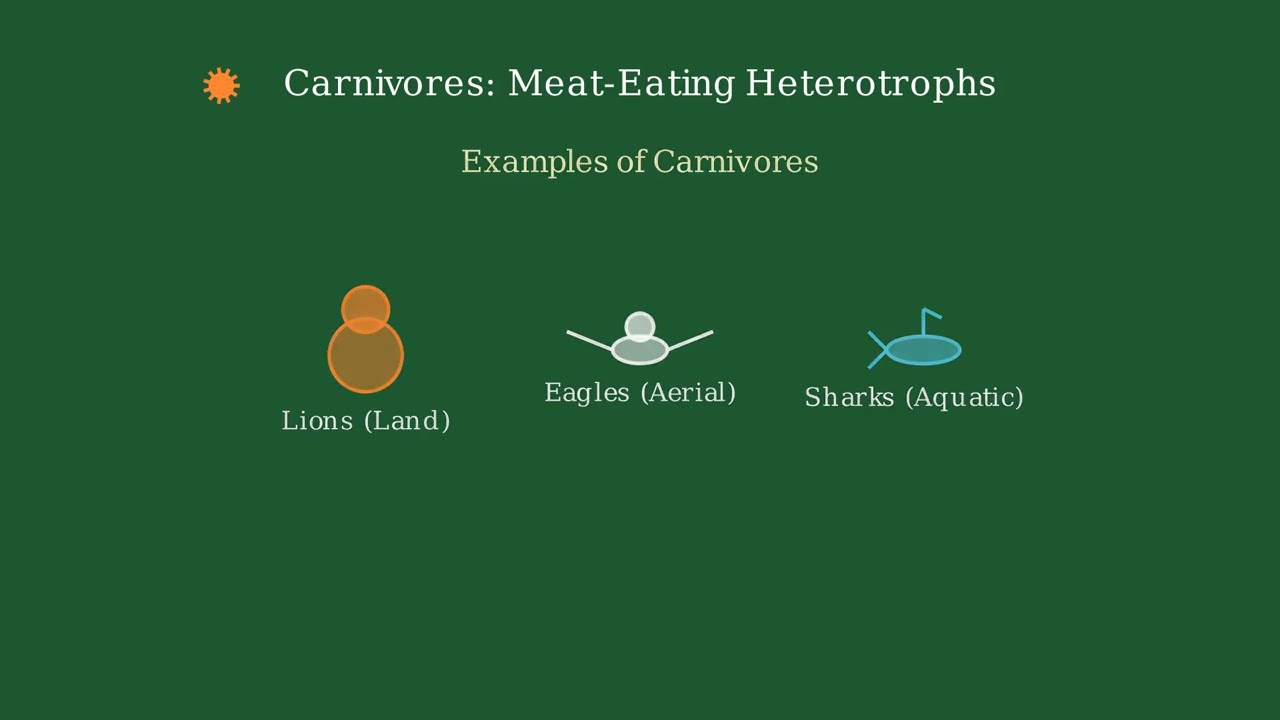
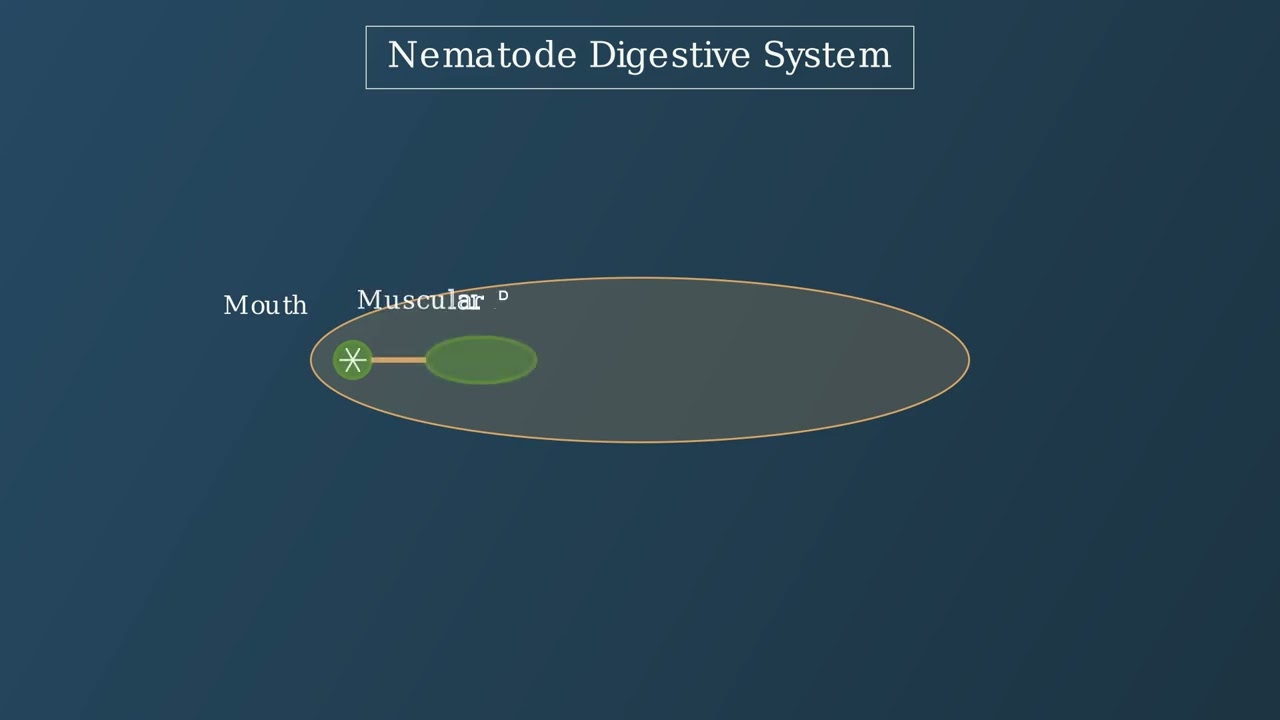


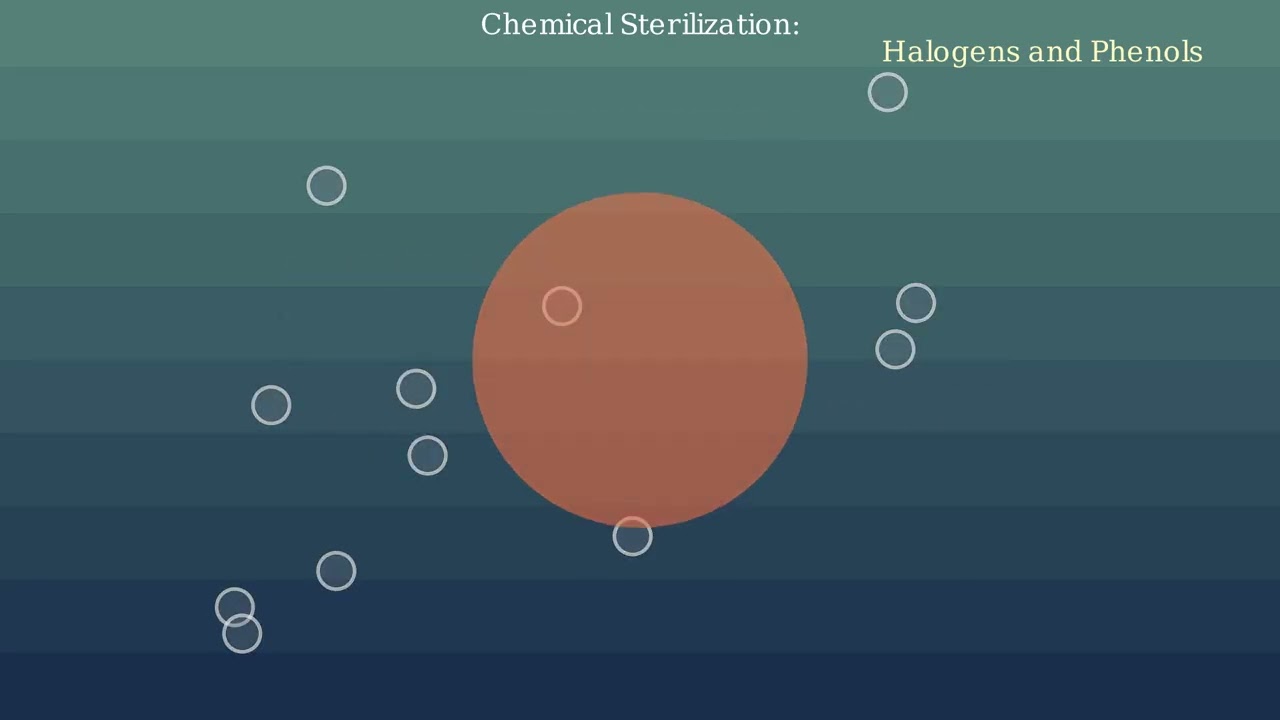

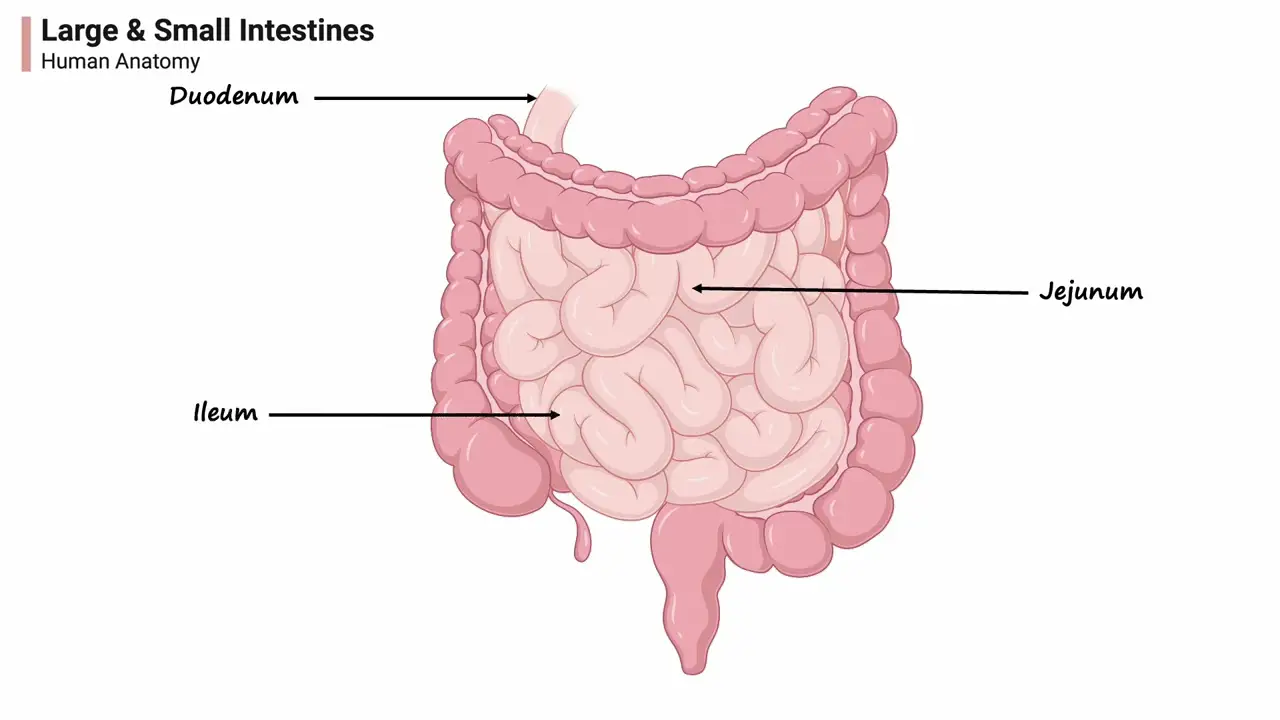
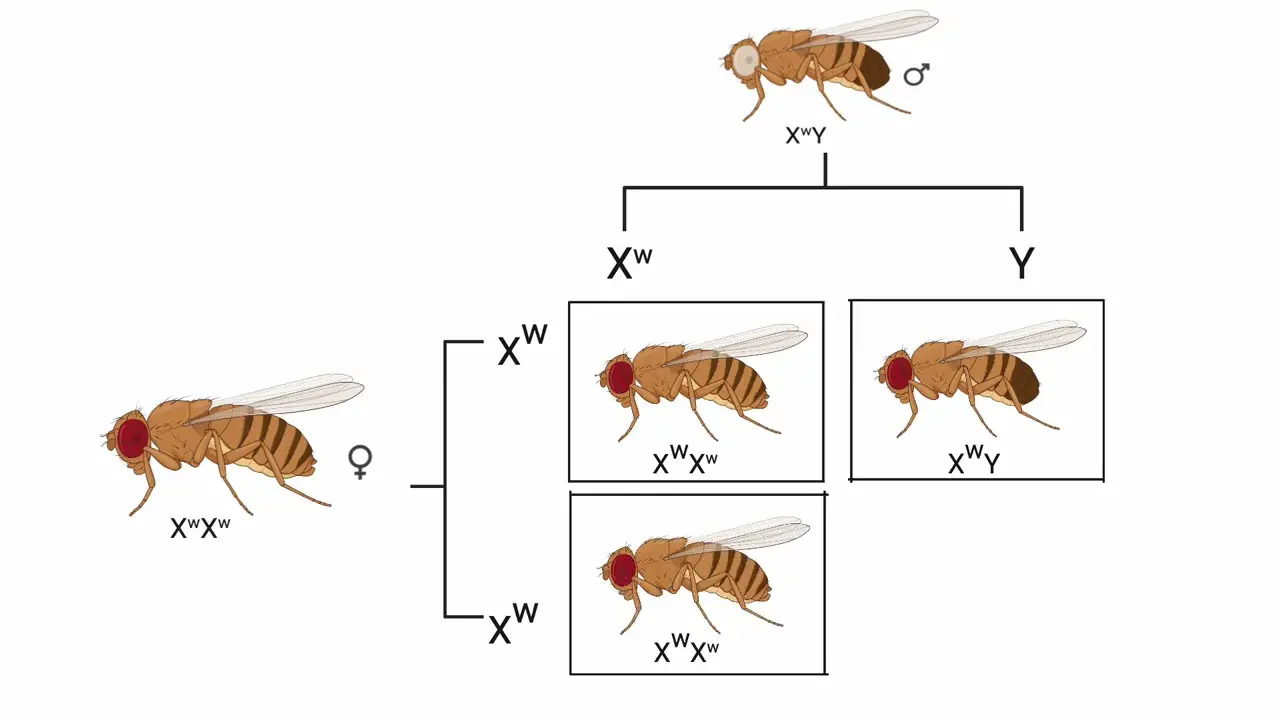

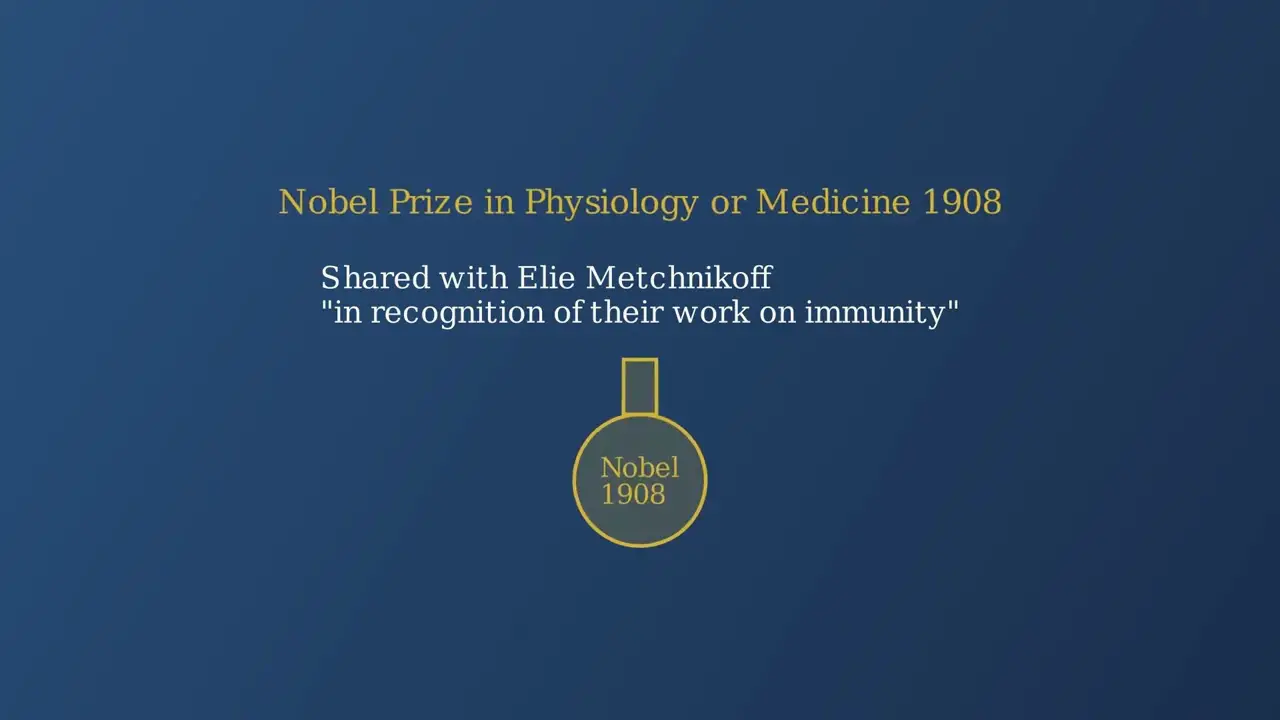
- Text Highlighting: Select any text in the post content to highlight it
- Text Annotation: Select text and add comments with annotations
- Comment Management: Edit or delete your own comments
- Highlight Management: Remove your own highlights
How to use: Simply select any text in the post content above, and you'll see annotation options. Login here or create an account to get started.